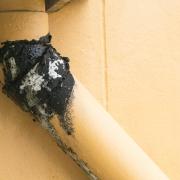The Most Common Ways Water Can Leak Into a House
A water leak is a huge problem that can lead to expensive damage if ignored. It can cause furniture, books, and clothes to swell or even become ruined. It can also cause puddles to appear in your home or yard.
Many homeowners ignore leaks until they find a puddle on the floor or see their water bill spike. Identifying these leaks is key to saving time, money, and stress.
1. Burst Pipes
A burst pipe is one of the worst home plumbing problems you can face. It can cause major damage to your floors, walls and ceilings, and lead to thousands of dollars in repairs and renovations.
Luckily, you can often prevent this from happening by taking a few simple steps. First of all, you should always turn off your water supply as soon as you notice a leak or puddle on the floor. If possible, mark where the water shut off valve is so that you can find it quickly in an emergency.
Another important thing to do is to check your pipes regularly for cracks or leaks. This is especially important during winter, when it’s easy for the temperature to drop suddenly and freeze existing water in your pipes. When this happens, the ice will expand and create enormous pressure on the pipes, which could lead to them bursting. Ideally, you should install insulation in your house to help keep your pipes warm. This will also prevent them from freezing in the future.
2. Broken Pipes
Our homes are built on a framework of pipes that carry fresh water throughout. They are sturdy enough, but they can become damaged over time. This can happen for a variety of reasons, including age, environmental factors, and stress to the pipes.
If you notice a puddle or damp area on your floor, it could mean there is a broken pipe nearby. It’s important to act quickly so that more water doesn’t seep into your house, as this can lead to expensive damage to your furniture and drywall.
Other telltale signs of a broken pipe include a metallic smell and the presence of mold. The latter requires a moist environment to grow, so if you have mold on your ceilings or anywhere else in your home, this can be a sign that behind the walls, there is a leaky pipe. Make sure you turn off your water supply right away to avoid further problems. Then, call a plumber to find and fix the problem. You can also check your homeowner’s insurance policy to make sure the damages are covered.
3. Frozen Pipes
Pipes are prone to freezing during cold weather, especially older pipes or ones without enough insulation. Frozen pipes may not burst immediately, but over time they can crack or break and lead to water damage.
A common sign of a frozen pipe is turning on the faucet and only getting a trickle of water. You might also notice a bad odor coming from the sink or drain that connects to the frozen pipe.
One of the most important things to do if you suspect a frozen pipe is to shut off the water main at your home’s water supply valve. Next, you should call a plumber.
If you aren’t able to get your plumber right away, start by trying to locate the frozen pipe. Frozen pipes tend to be in areas with less heat, such as the basement, attic, or unused rooms in the house. Open up any cupboard doors so warm air can circulate in those spaces. Then, try to feel the pipes or tap them with a screwdriver handle or other object. If they’re frozen, they will feel cold to the touch and have a hollow sound.
4. Clogged Gutters and Downspouts
Gutter downspouts carry rainwater away from your home to keep it off the shingles and roof. But gutters can become clogged with leaves, dirt, and debris that prevent water from flowing through. Without an effective gutter system, water collects on the roof and seeps into the house at jointed places like the fascia board and soffit, creating serious water damage over time.
A clogged gutter can also invite hearty weeds, grass, and plants to grow inside your gutter. If your gutters are clogged, it’s important to clean them on a regular basis and install gutter guards to reduce the number of clogs.
5. Leaky Appliances
Leaks from appliances such as refrigerator icemakers, dishwashers and washing machines can go unnoticed for some time. But they can lead to hundreds of gallons of wasted water and astronomical water bills. These leaks are also a prime opportunity for mold and mildew to grow, especially if left untreated.
One of the most important things you can do to help prevent water leaks is to make sure your appliances have proper seals and gaskets. You should also regularly inspect your appliances for leaks, especially if they are older.
If you notice a sudden increase in your water bill or water spots on walls or floors, shut off everything that uses water in your home and check the water meter. If the number has changed despite all the faucets, showers and hoses being turned off, there is a water leak somewhere in your home. You can also try using a moisture meter to find the location of the leak. If a leak isn’t fixed in time, it can cause major damage to your home. The best way to avoid this is to have regular plumbing inspections done by a professional.






